A Pictorial Guide to Bees
of the
Humboldt Bay Dunes
by Susan E. Nyoka
Humboldt Bay National Wildlife Refuge
RELEASE 1.0 - July 2004
of the
Humboldt Bay Dunes
by Susan E. Nyoka
Humboldt Bay National Wildlife Refuge
RELEASE 1.0 - July 2004
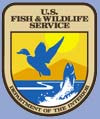
|
A Pictorial Guide to Bees
of the Humboldt Bay Dunes by Susan E. Nyoka Humboldt Bay National Wildlife Refuge RELEASE 1.0 - July 2004 |
 |
|
Home How to Recognize a Bee
|
|||||
|
Common Name: leaf-cutter bee Scientific Name: Megachile wheeleri Flight season: June-September Recognition characters: Mid-sized to large (11-16 mm), robust, with gray pile on the thorax; pile in young males is a striking rusty gold that fades with age; abdomen black, with narrow bands of white pile; females carry pollen in scopae (brushes of specialized hair) located on the underside of their abdomen; males sport a silvery "beard" and long cream-colored brushes of hair on the lower front legs.
|
|||||
Nest sites: Aggregations of several nests can be found in biotic soil crusts, (dense mats of moss and lichen coalesced over sand), or small patches of open sand consolidated by plant roots.
|
|||||
Nest materials: Megachile cuts leaf pieces from dune goldenrod (Solidago spathulata ssp. spathulata) with it's mandibles and transports them to nest sites where cells are constructed. 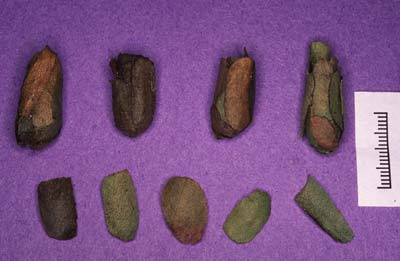 |
|||||
Preferred flowers: Collect pollen exclusively from plants in the daisy family (asteraceae), but may occasionally be observed nectaring on other plants. 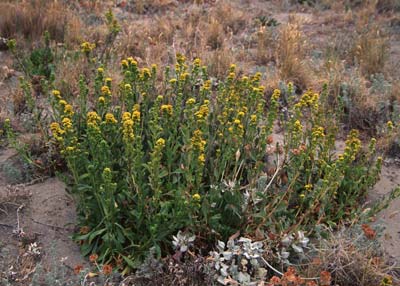 dune goldenrod (Solidago spathulata ssp. spathulata) 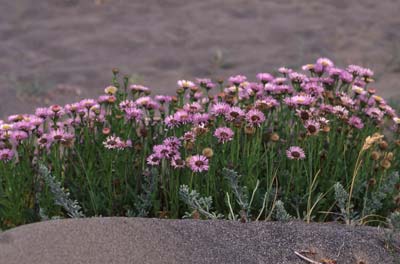 seaside daisy (Erigeron glaucus) 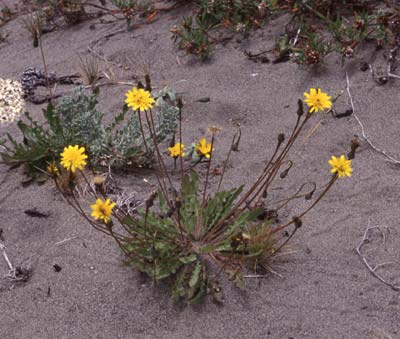 hawkbit (Leontodon taraxacoides) |
|||||
|
|